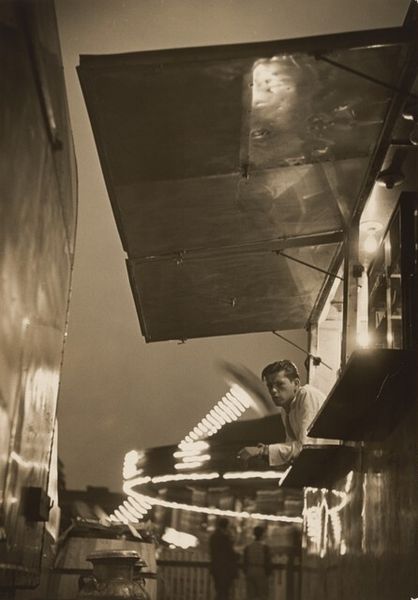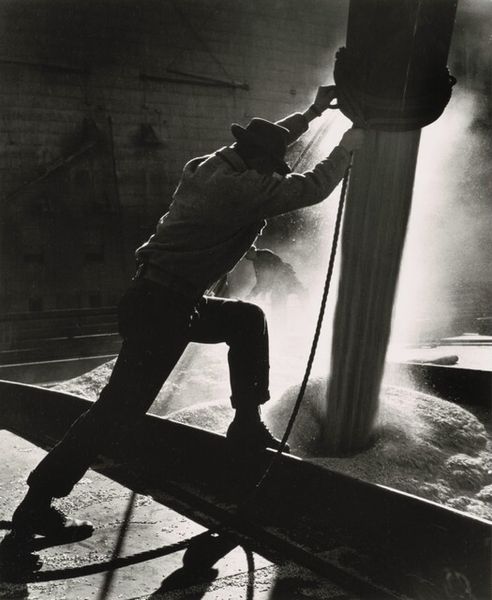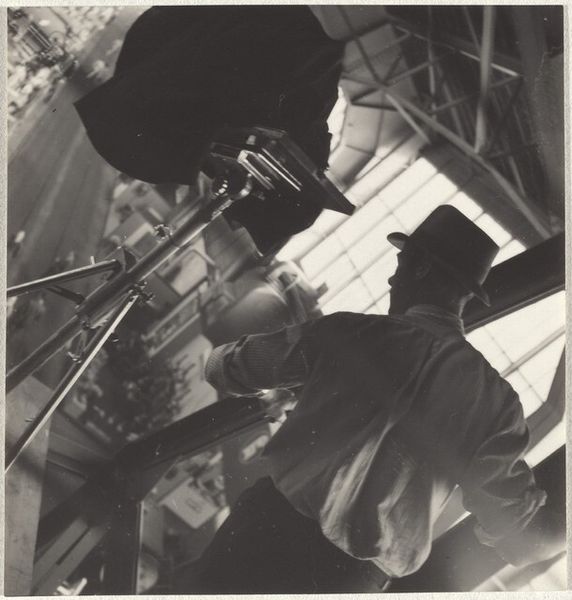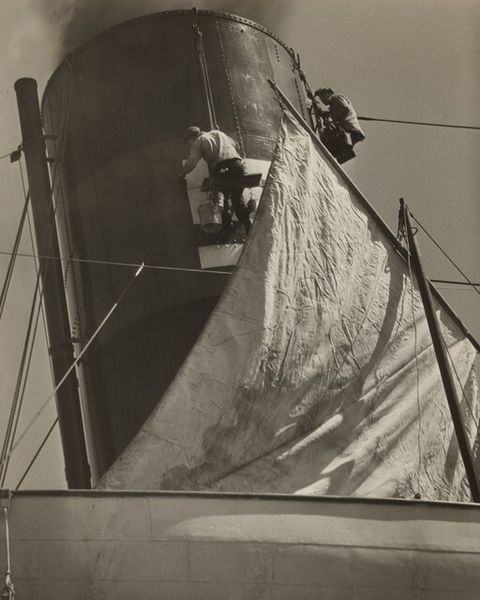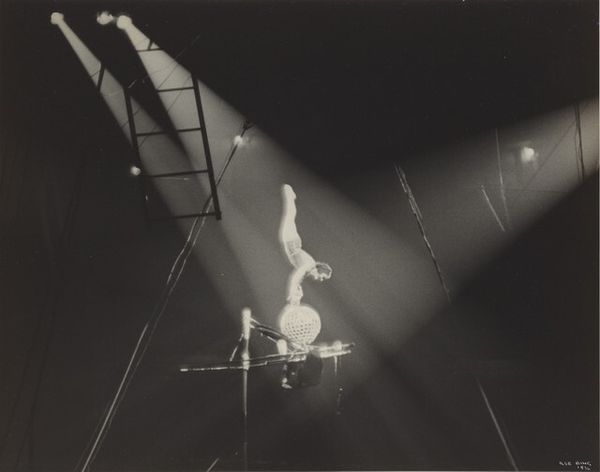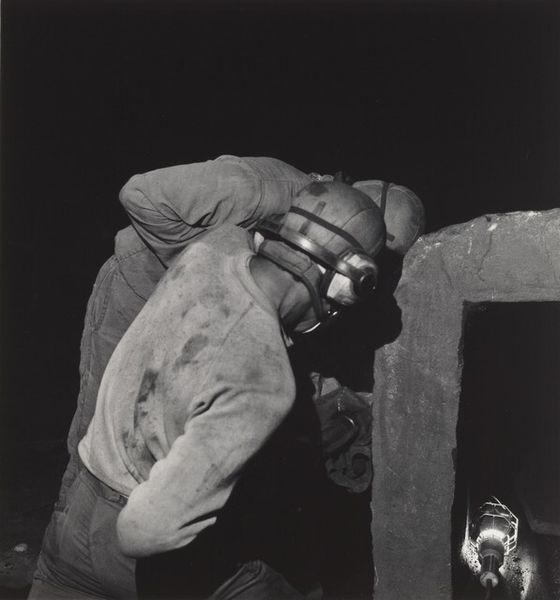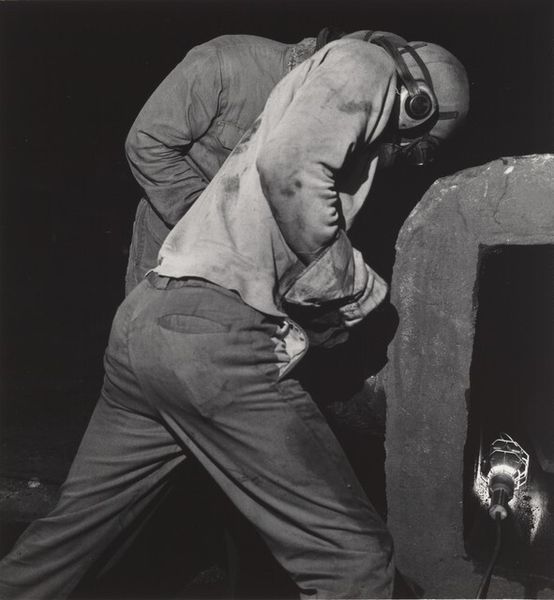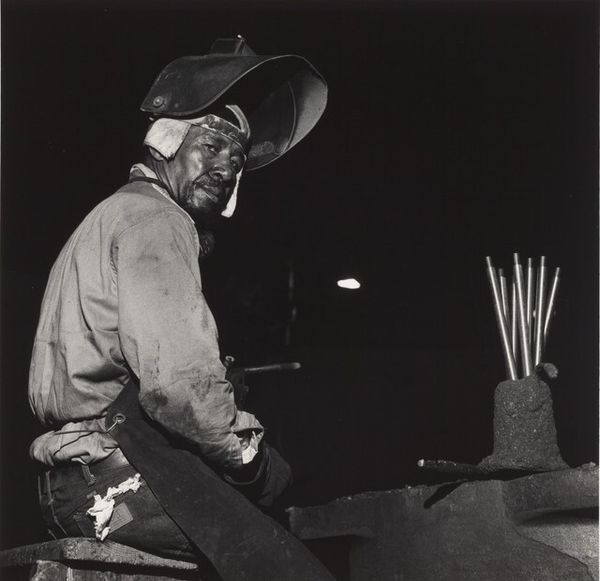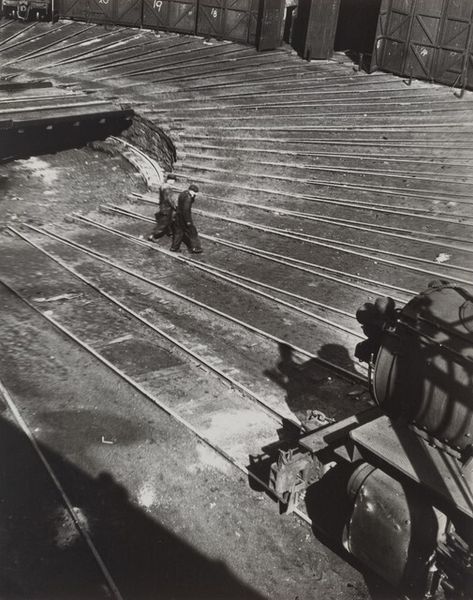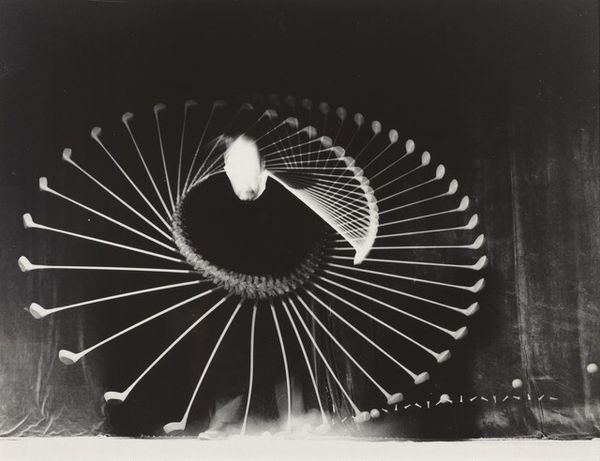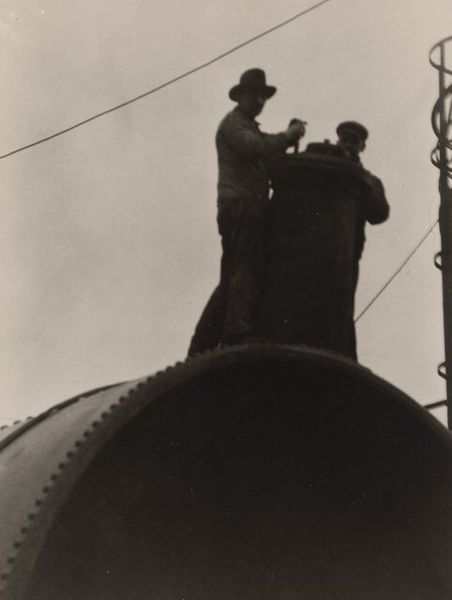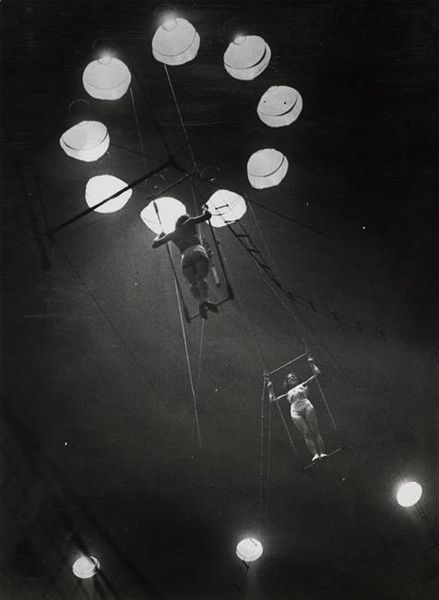
#
wedding photograph
#
black and white photography
#
black and white format
#
archive photography
#
b w
#
black and white theme
#
black colour
#
black and white
#
monochrome photography
#
monochrome
Dimensions: sheet: 28.9 × 25.1 cm (11 3/8 × 9 7/8 in.) image: 23.2 × 19.1 cm (9 1/8 × 7 1/2 in.)
Copyright: National Gallery of Art: CC0 1.0
Editor: We’re looking at "Grease Plant Worker, Pittsburgh, Pennsylvania," a photograph taken by Gordon Parks sometime after 1944. The monochromatic image has an incredibly strong visual presence; the worker seems to emerge out of the steam and machinery, solid and determined. What statements about identity and labor can we read in this portrait? Curator: This photograph provides a lens into the socio-economic realities of post-war America, especially regarding the African American working class. Parks consistently used his camera to address issues of racial and economic injustice. Notice how the composition positions the worker in relation to the machinery. Editor: It feels…almost adversarial? Curator: Precisely. But think about the era: the Great Migration saw many African Americans moving North for industrial jobs, often facing discrimination and limited opportunities. Is the machinery a symbol of oppressive systems, or does the worker’s resilience offer a counter-narrative of power? How does this image enter into dialogue with contemporaneous photographs of labor, especially those depicting Black workers? Editor: I hadn't considered the power dynamic so explicitly. His gaze, directed upwards, now suggests defiance rather than mere acknowledgement. It transforms the image. Curator: Exactly. It speaks volumes about Parks’ ability to infuse dignity and agency into his subjects, challenging viewers to confront uncomfortable truths about inequality and the human cost of industrial progress. Editor: This has provided a much deeper understanding than a mere description of the subject or context of its creation, shifting how I will analyze historical photographs going forward. Curator: That's the beautiful thing about engaging with art through an intersectional lens; it constantly prompts us to question our assumptions and consider broader historical and social implications.
Comments
No comments
Be the first to comment and join the conversation on the ultimate creative platform.
